Day 13 - Galapagos, Part 3
Lava Tubes, Tortoises, and Moonshine, CDRC (long!)
What an amazing day. Jose and Xavi wanted to show us the diversity of Santa Cruz Island—from the lava tubes right on the property of the hotel, to tortoises in the wild, and a brief foray into the wide array of agricultural opportunities. Couldn’t have been better!

Lava tubes are also found in Hawaii, particularly the big island which has very long tubes. These are about two million years old, and not quite as long, but still stretched a couple of miles. We explored about a half mile entering through a sky light (a hole where the crust of the tube had collapsed). The path inside was uneven but there were some man-made lights along the way as well as our flashlights to see. There were a few small stalactites, but no stalagmites or columns due to the lack of time for them to grow. We thought it would be cool inside, but it was very humid and got hotter as we progressed through tunnel.
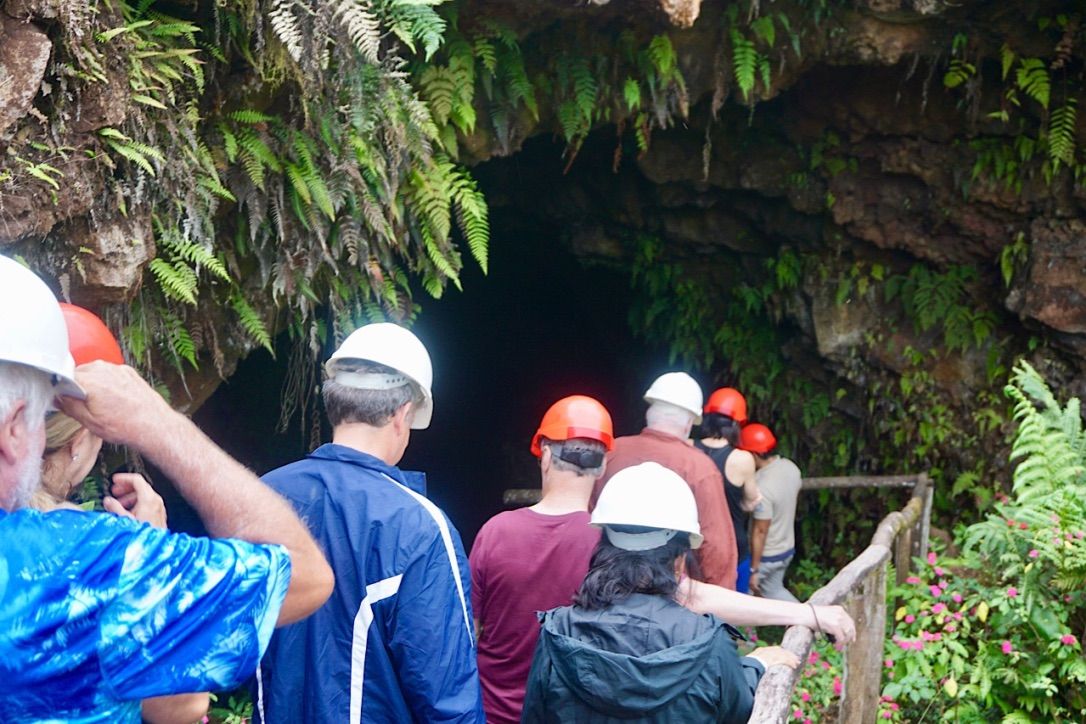
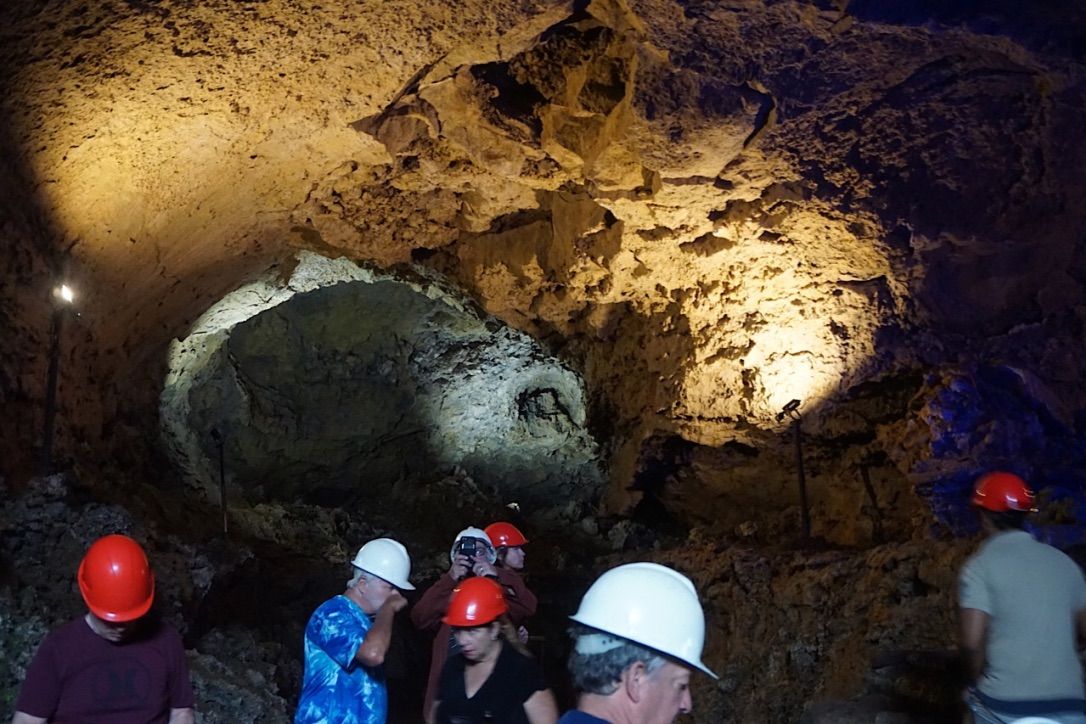
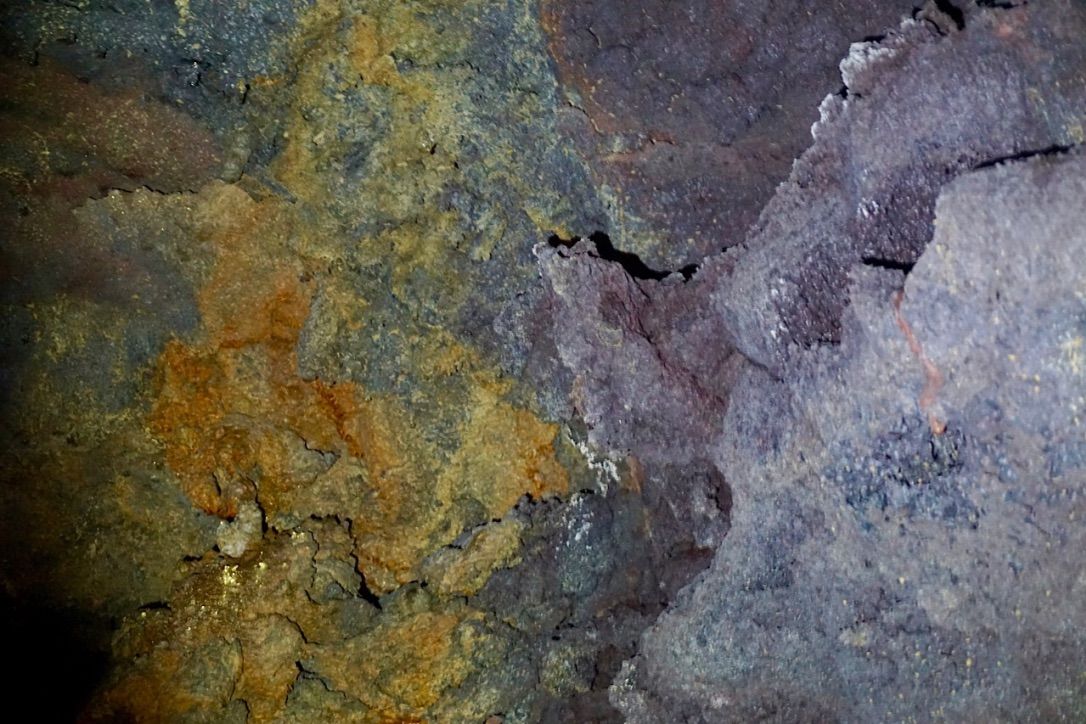
We met up the rest of our group at the end, and travelled about two miles to the Rancho El Manzanillo farm—about 250 acres of land abundantly rich in all things agricultural, plus, it abuts the Galapagos National Park and was the prime visiting spot for wild tortoises, (who don’t seem to recognize boundaries of where the park ends and private property begins - lucky for us!). We spent almost an hour watching these huge creatures who lumbered about, eating whenever and wherever they stopped, or soaking in mud, or just watching us back. Pictures are abundant, and so much fun getting the perfect shot. You are not allowed to sit on them, of course, and need to stay the required six feet away, but still lots of opportunities to get up close and personal.
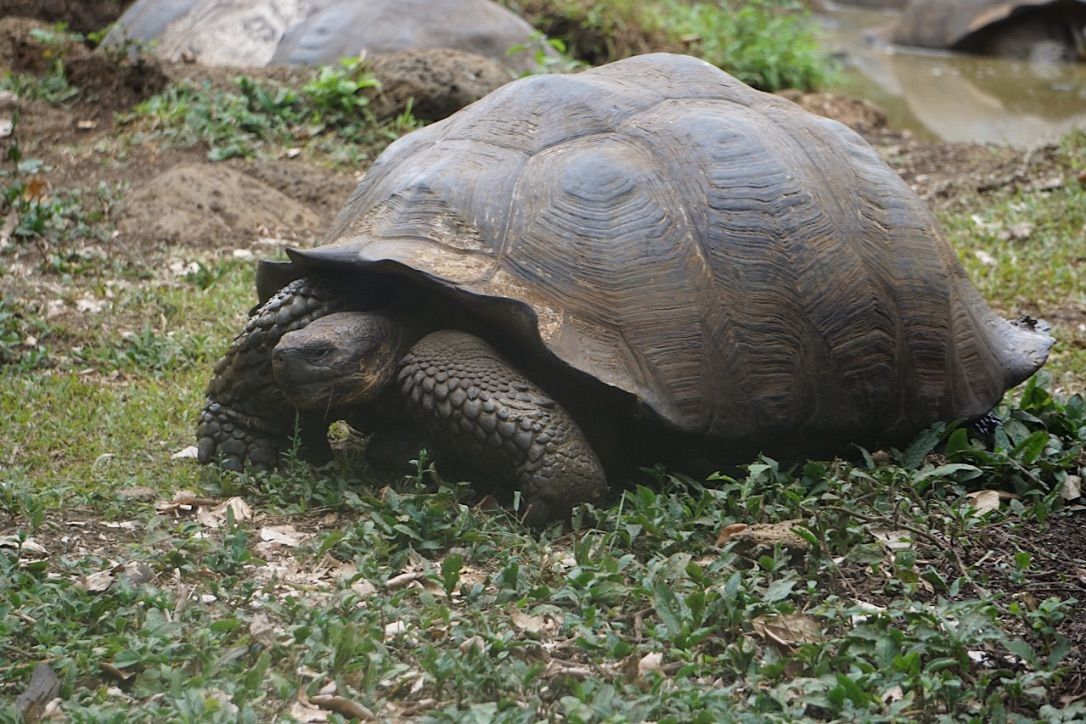
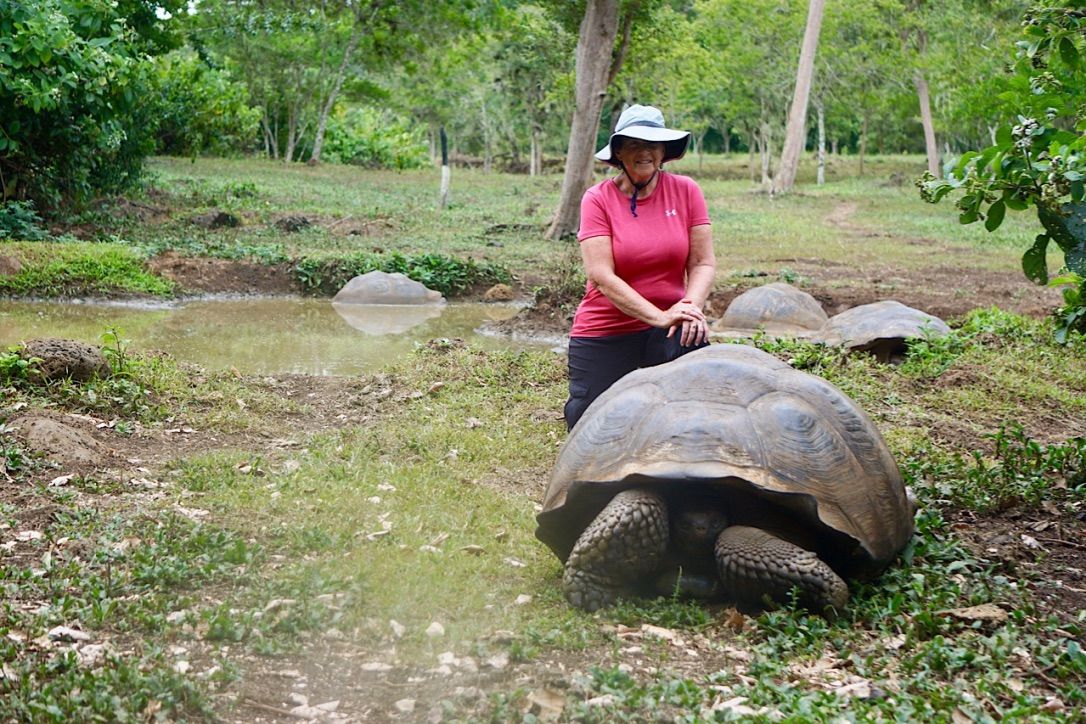
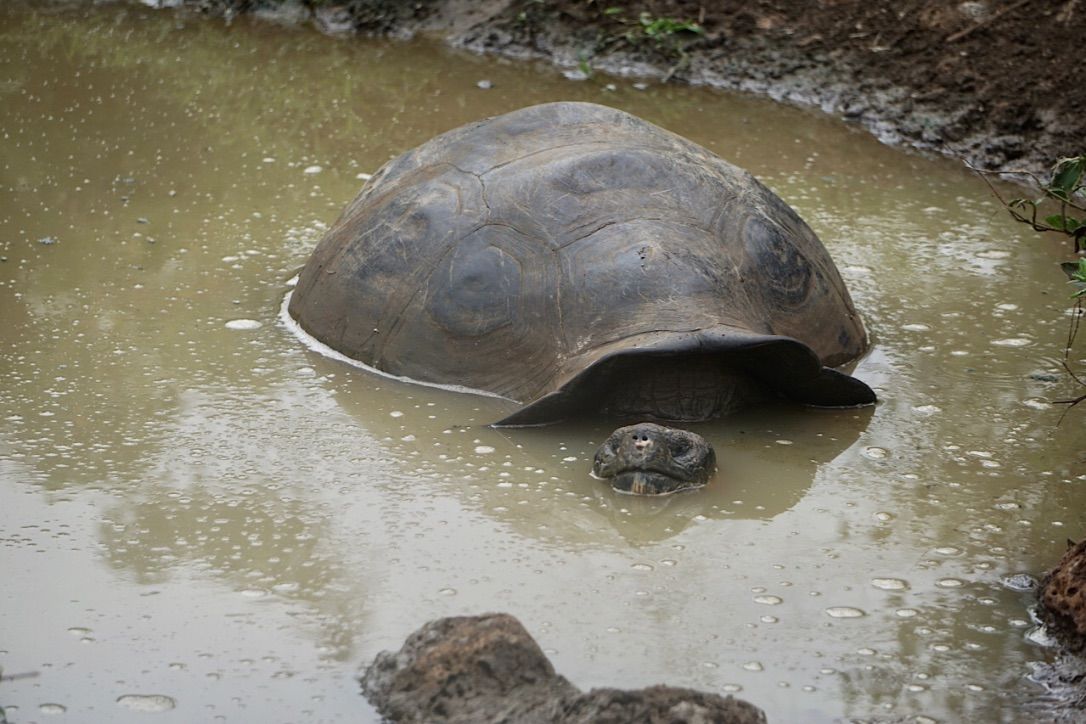
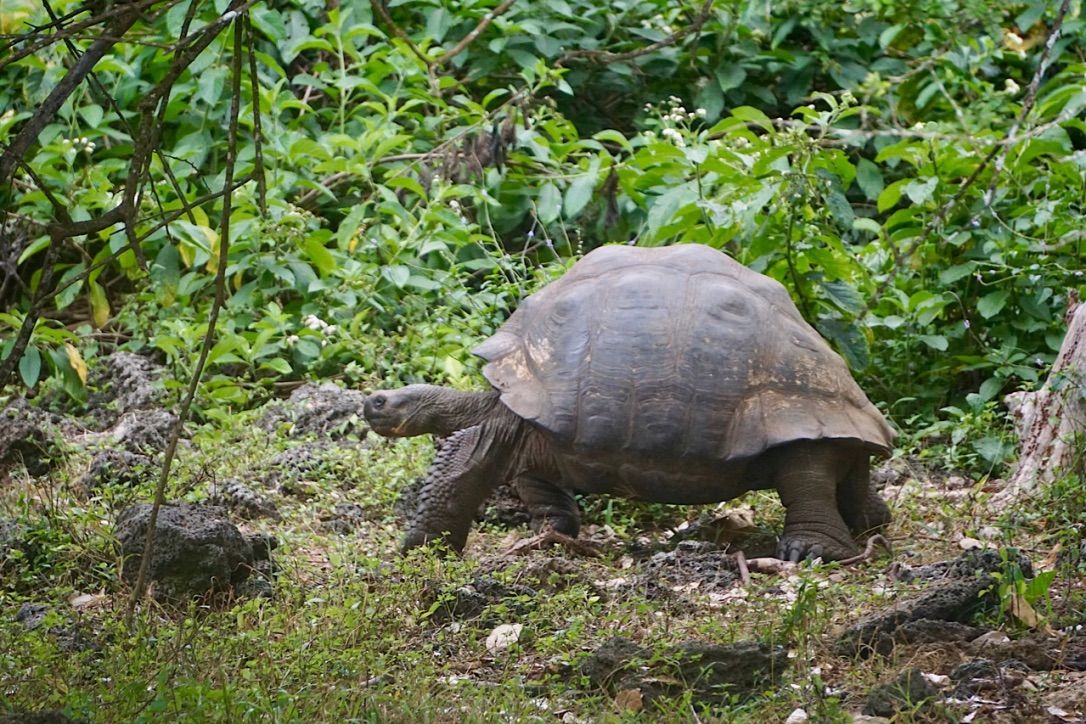
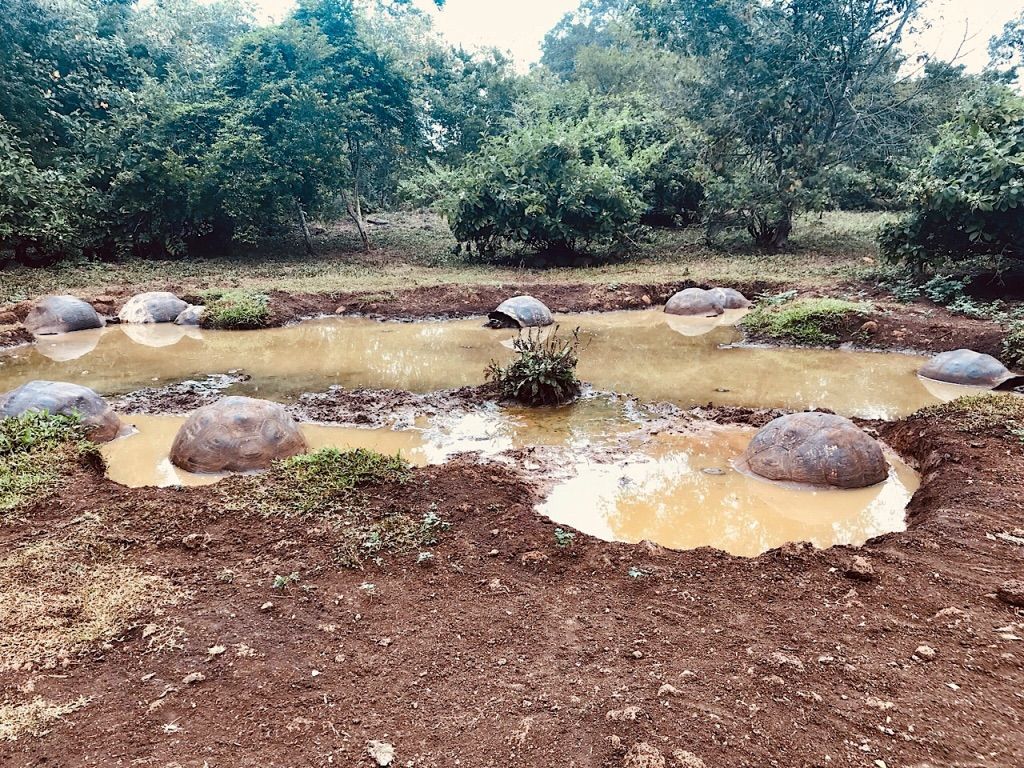
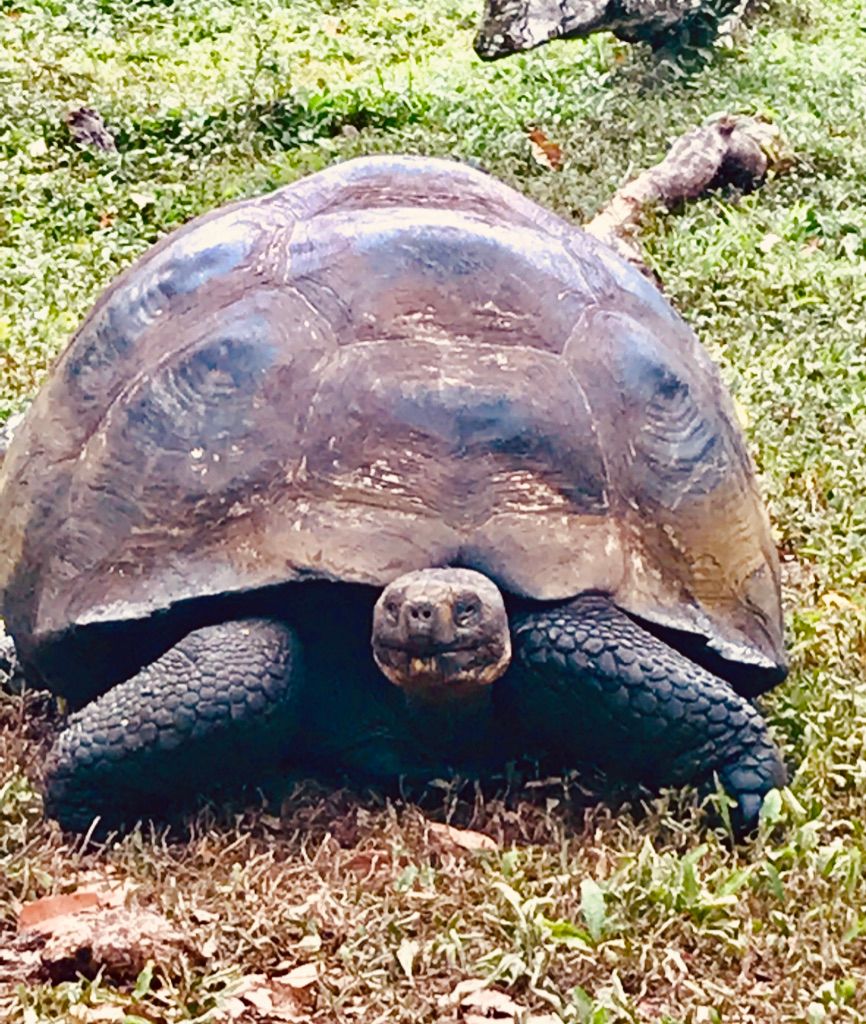
From there, we walked to another part of the ranch where we got a lesson in sugar cane and juice harvesting. Wendy and fellow traveller Curtis served as donkeys, turning the manual juicer. ( It was Sunday—we were told the regular donkey had the day off:) The ultimate objective here was to make moonshine!
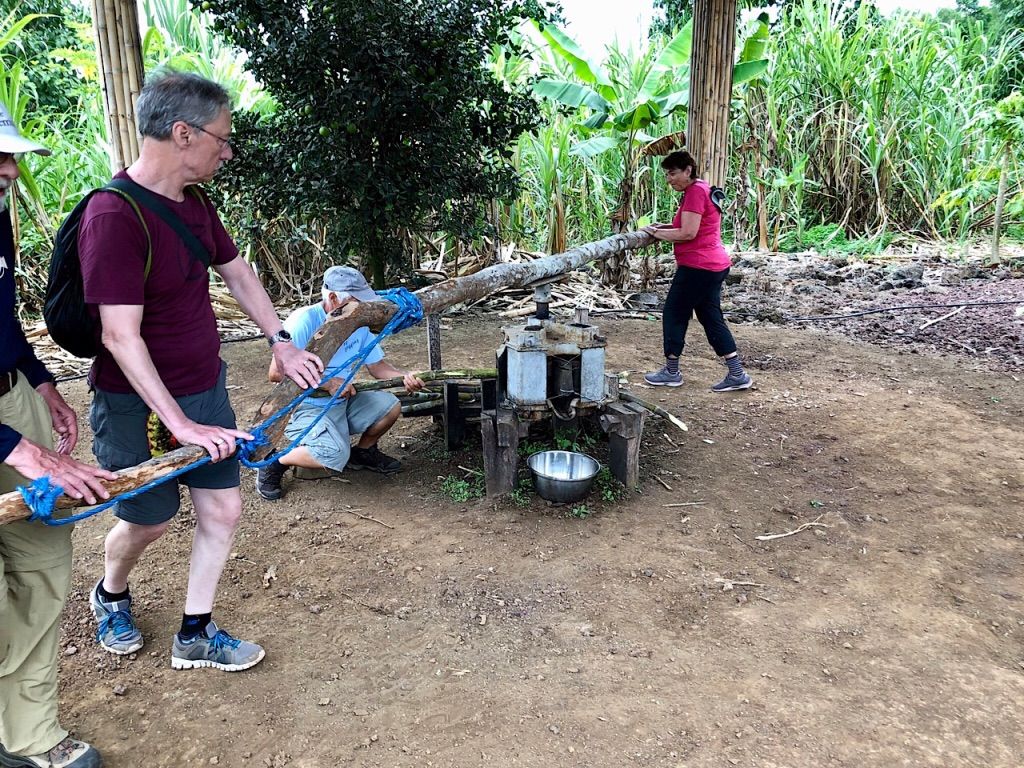
We sampled first a refreshing pure sugar cane juice, then with added bitter orange, and finally spiked with distilled sugar cane alcohol. Yum!
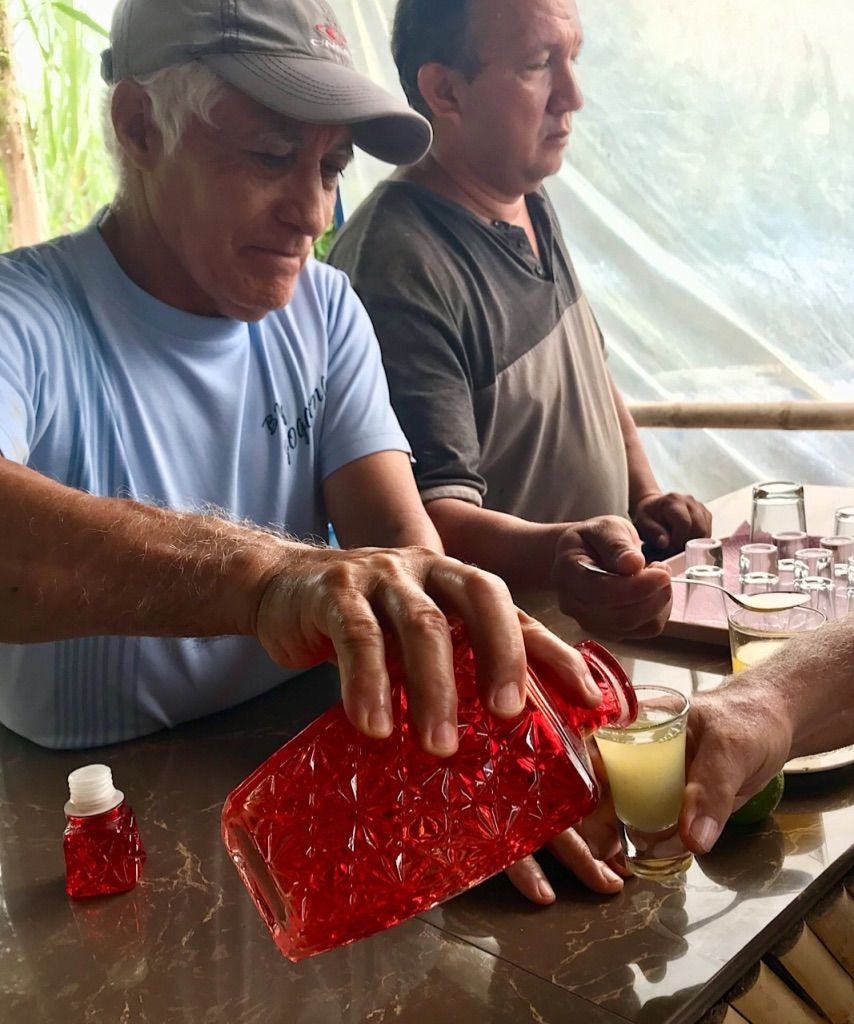
The owner was very proud of his new electric still, demonstrating the process, and then selling us the moonshine alcohol. - $5/pint!


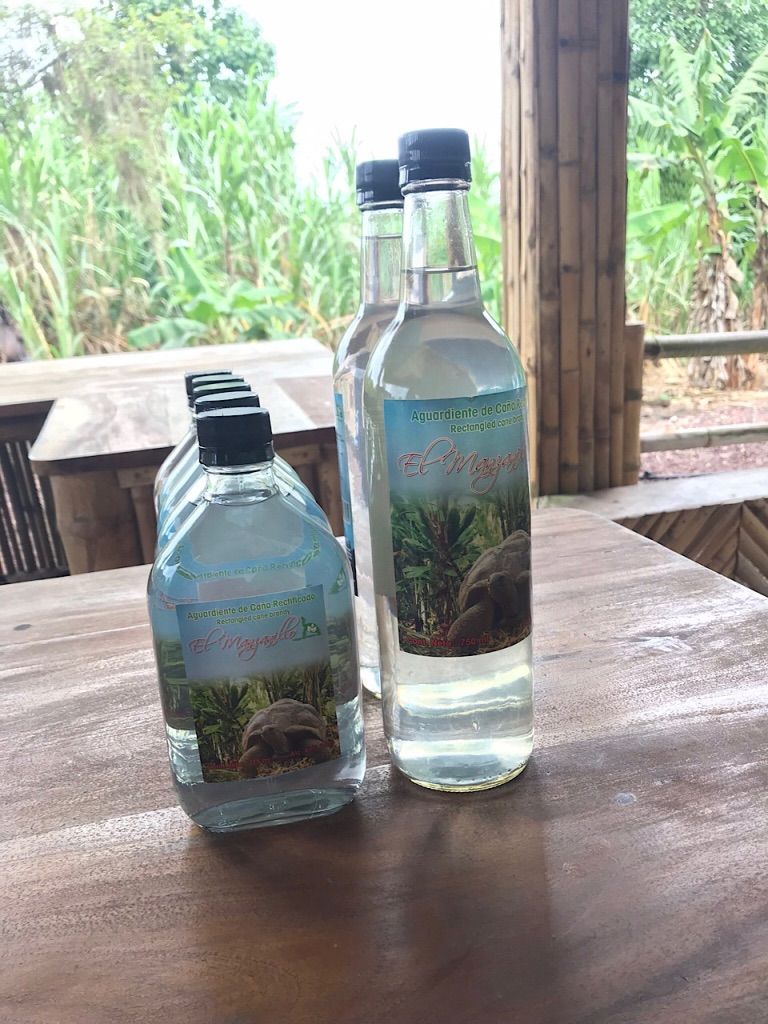
Nearby were pineapple, coffee, papaya and other fruit plants that are all harvested on the farm.

Since Wendy had been trying for 3 days to photo the elusive yellow warbler, she finally saw a great opportunity.
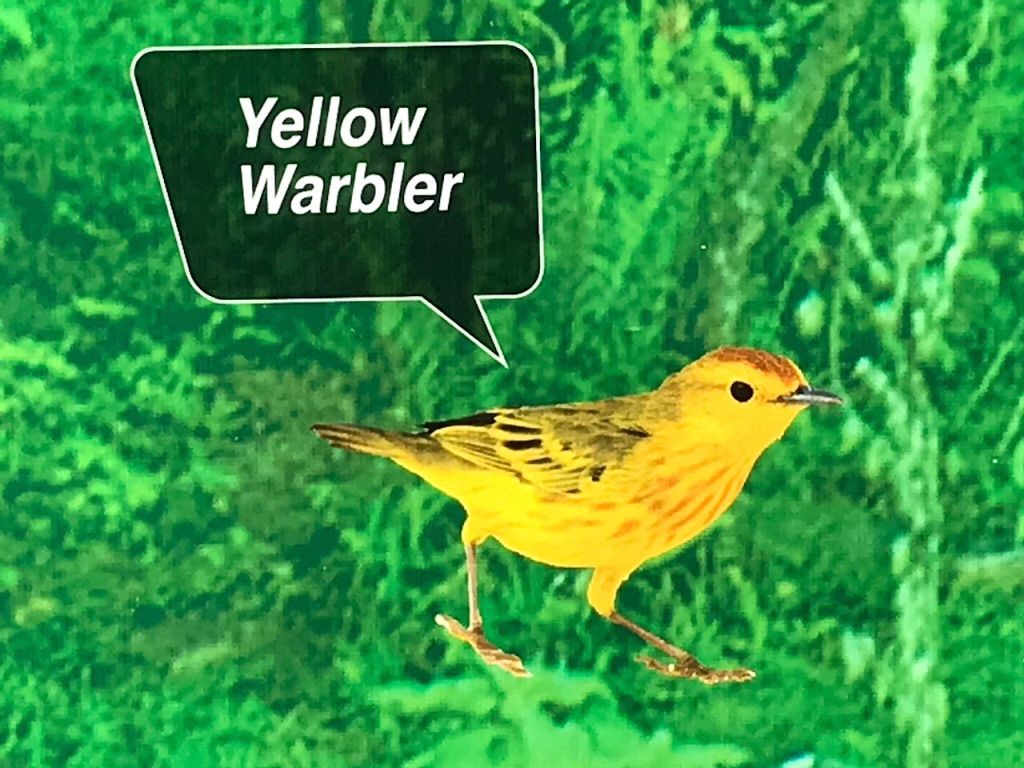
Oh well, she’ll keep trying for the real thing - not the best picture, but they move incredibly fast. They’re not as accommodating as some of the other birds who actually posed, or at least stood still long enough to get a picture.

We then headed back to the hotel for a fish lunch of a variety of Grouper, cooked whole on the grill. We also got a lesson in preparing ceviche the Ecuadorian way— using ketchup and mustard along with more traditional ingredients.
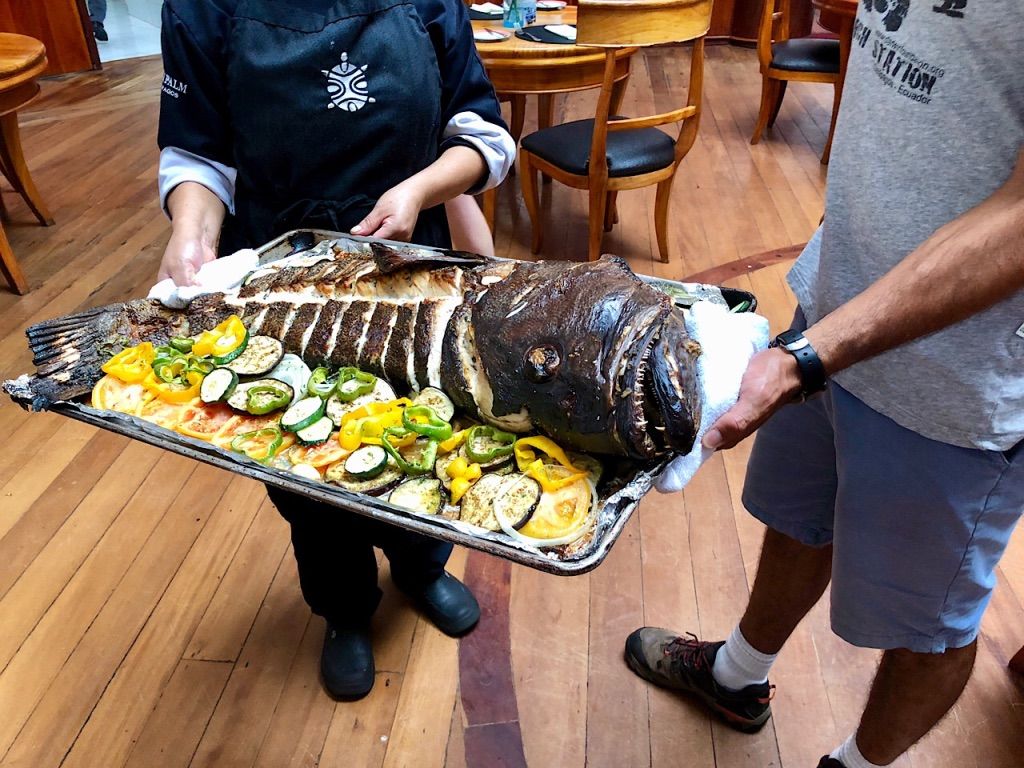
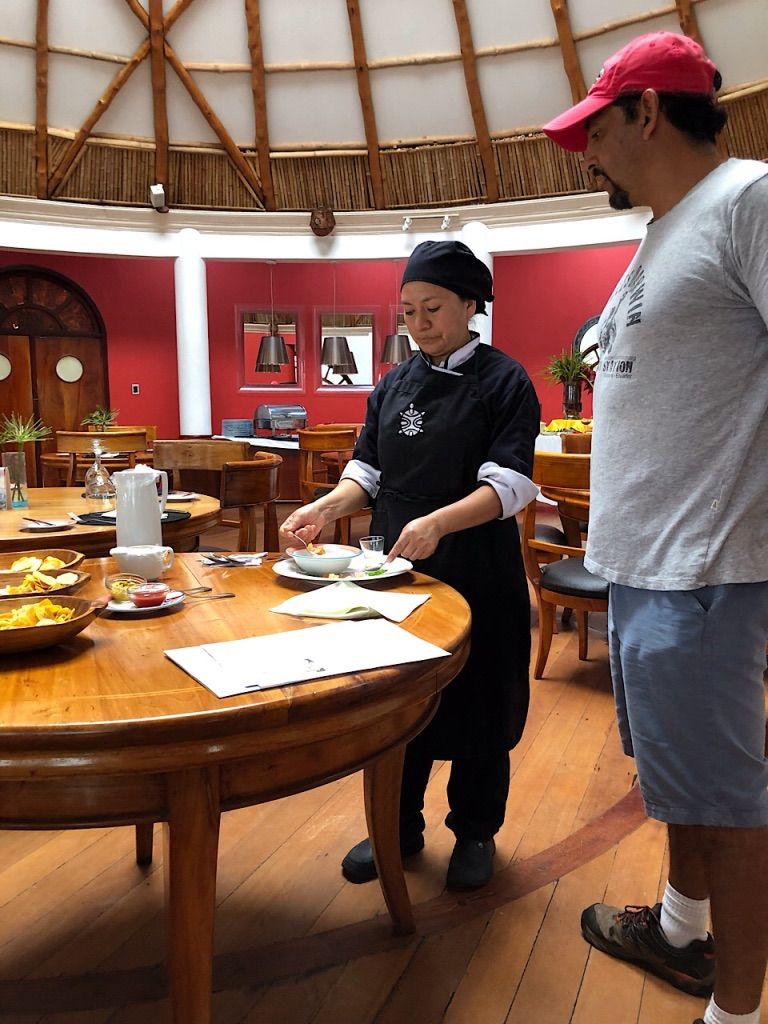
After a short rest, we got back on the bus to travel into town for some shopping opportunities. But first, a stop at the important Charles Darwin Research Center (CDRC). On the way we first passed some marine iguanas sunning by the side of the road.


At CDRC, they have a breeding center to try to repopulate the tortoise population. It is mostly outside, and for us a little bit anticlimactic since we had just seen about 30 wild tortoises earlier in the morning. There were three standouts: baby tortoise, which are numbered, researched and eventually let go into the wild but tracked; the stud tortoise Diego who has fathered over 800 offspring and was hanging out nearby, but couldn’t be found; and lastly, a tribute to Lonesome George. This was a fascinating story—George was evidently the only surviving tortoise of his kind from the island of Pinta after a devastating fire there. He was brought back to the CDRC in the hopes that he would mate and produce offspring, even though they would be "half-breeds". Sadly, only one female laid impregnated eggs which did not hatch. This was close to the end of George’s long life (about 120 years, give or take). He died in 2012. They did an autopsy and discovered he was sterile, having a blockage in his private parts. But then, they actually had him stuffed! We went into the freezing cold room after being "conditioned" into the cold for about two minutes. After viewing, we had to repeat the process. A rather strange way to honor George.
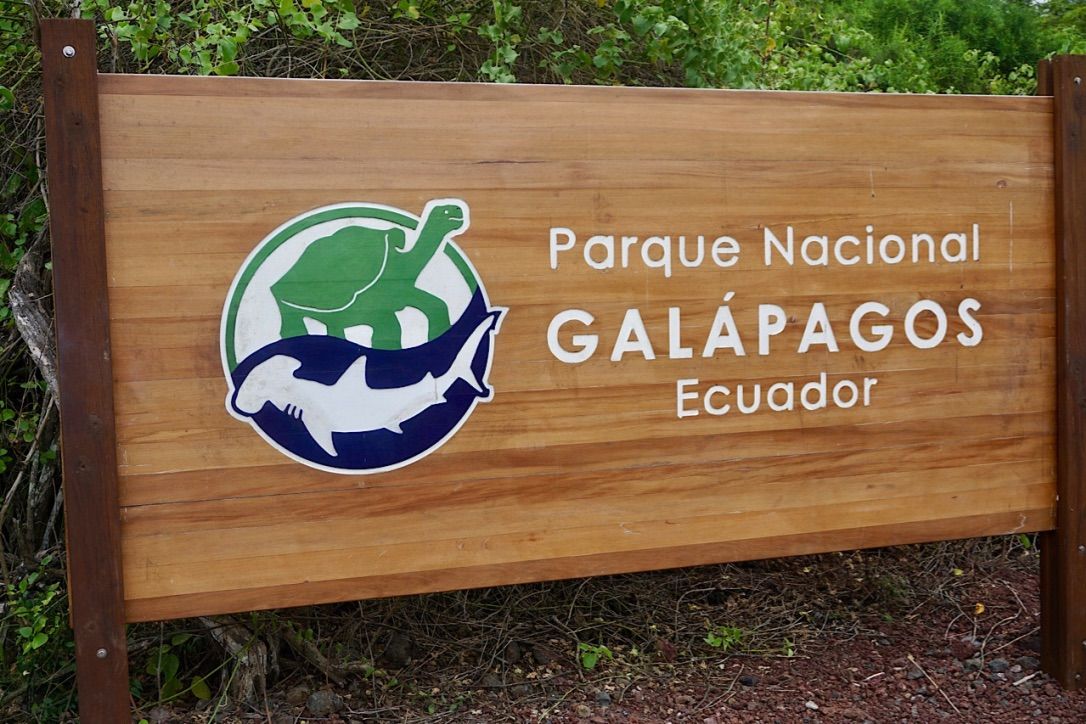
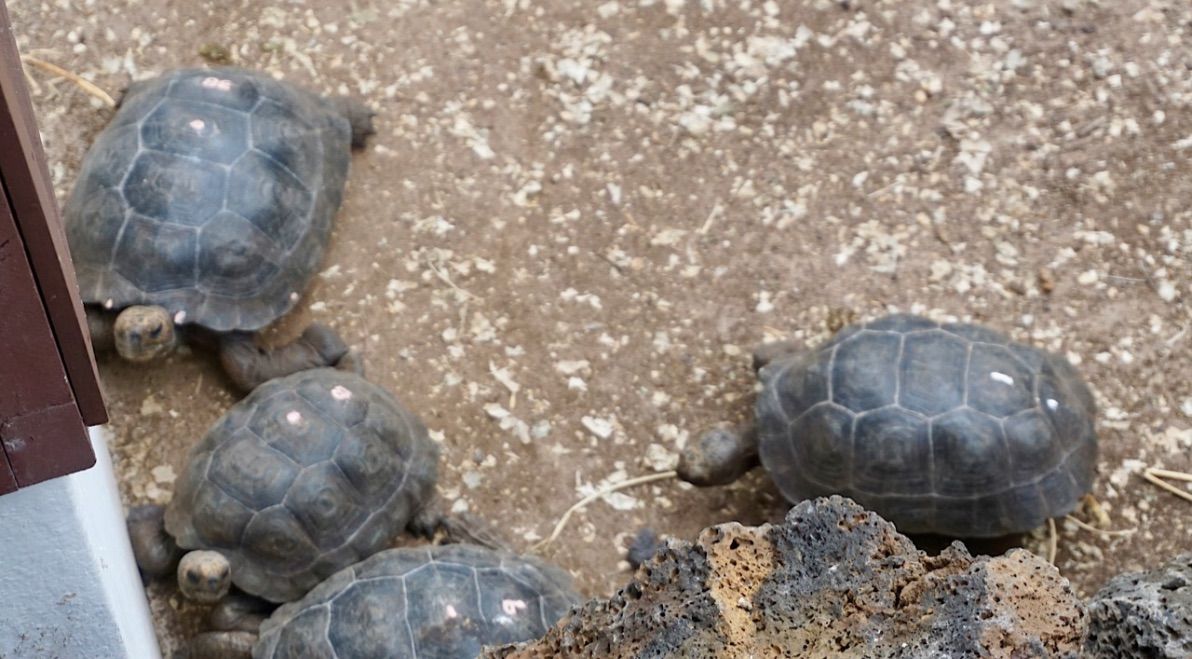
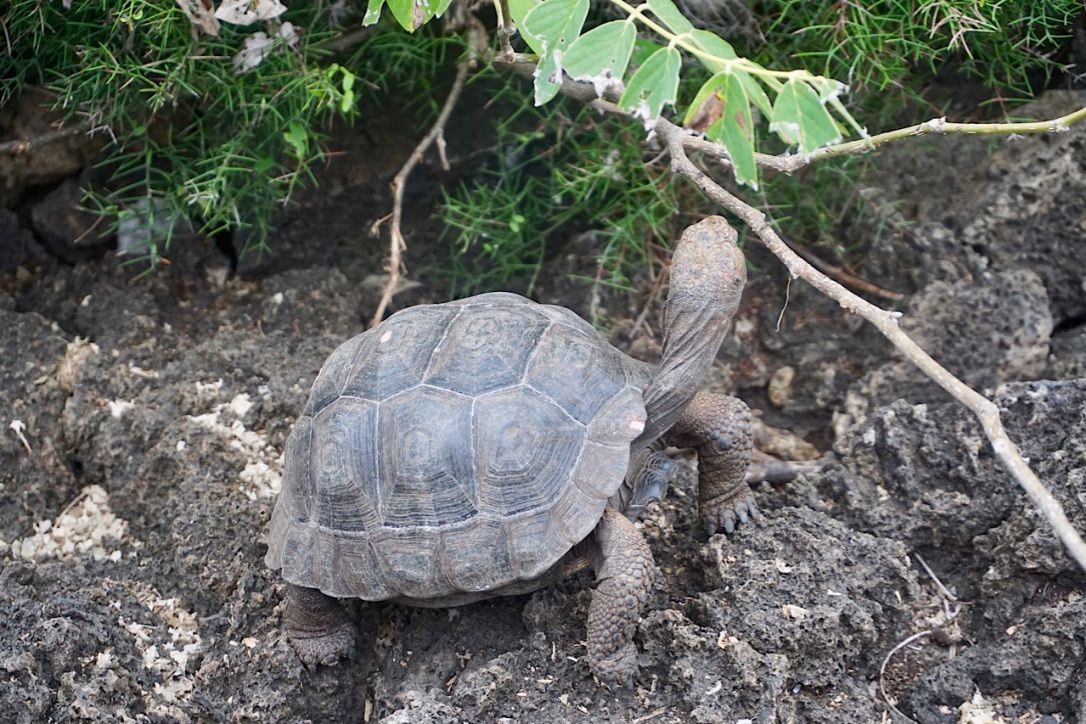

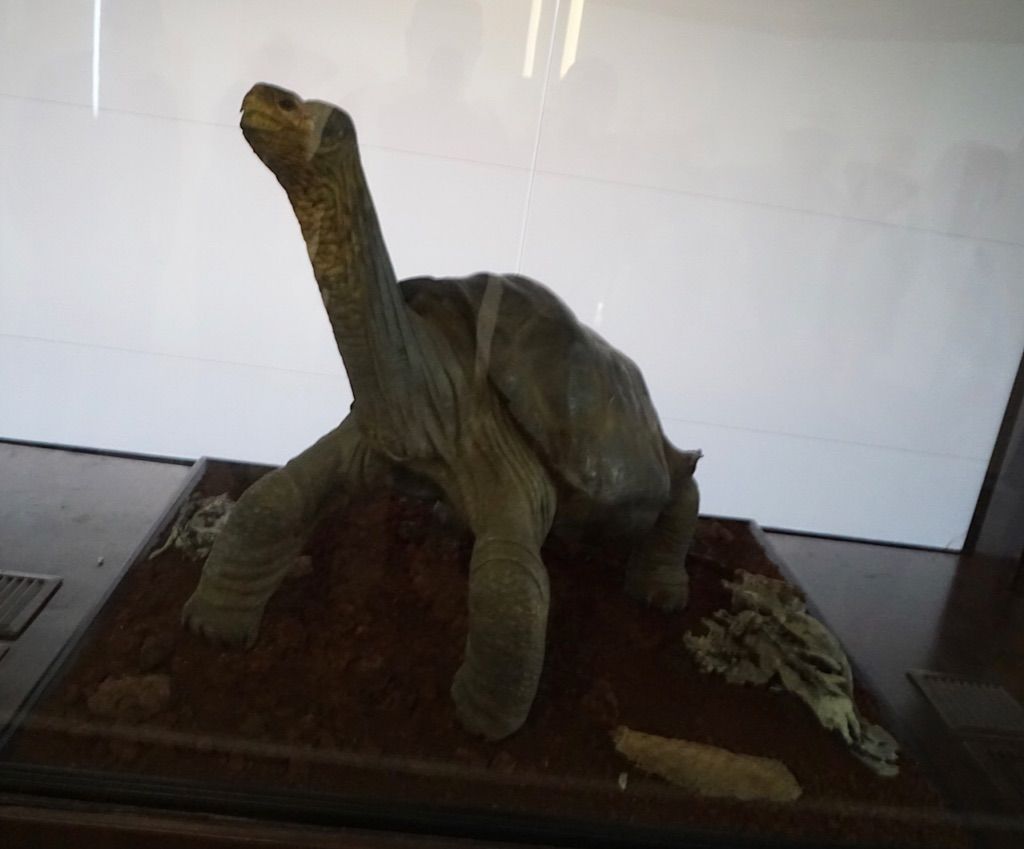
The town of Punta Astrada is very cute, providing us with plenty of venues to spend our tourist dollars. While walking to the bus, we passed a huge playground area. It was supposed to be for children, but a few interlopers were hanging out too.

Our last dinner on the Galapagos was a barbecue, inside due to the only rain we had on this trip. Now to pack—again—for our flight back to Quito tomorrow.

comments powered by Disqus